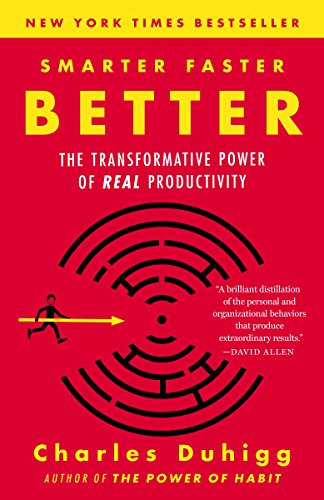Have you heard of the Feynman Technique? It’s an easy method of learning anything. Generally speaking, people cannot learn just by reading it in a book once. However, by using Feynman technique, one can easily learn anything and that knowledge sticks with them.
It helps you to understand the topic instead of learning it through cramming. Today, we will discuss this extremely useful technique in detail. But before we dig in, here’s a short explanation of what Feynman technique is.

Smarter Faster Better
by Charles Duhigg
⏱ 13 minutes reading time
🎧 Audio version available
What is the Feynman Technique?
The Feynman Technique is an easy learning method. It’s a four step technique that helps you to understand and learn anything. This excellent technique is regarded as an effective and quick method for learning anything. It is helpful in learning aspects of literature, history, and tough subjects, like economics. It is equally useful for scientific and mathematical concepts. Feynman technique helps you to understand a topic in its most basic framework. You have to understand a topic from its base if you want to master it.
How to Use Feynman Technique?
The Feynman Technique makes learning rewarding, meaningful, and practical. It will help you to figure out certain gaps that need improvement. It keeps your knowledge organized. Anyone can boost their memory through this technique.
This amazing learning technique helps you test yourself and recall knowledge more easily. It helps you to study and learn new things more efficiently. The Feynman technique also helps you enhance your teaching skills.
Steps Involved In Feynman Technique:
Feynman technique is simple four step process. These steps are discussed in detail below:
Step 1: Identify The Topic
The first step in the Feynman Technique is to select a topic you want to learn about. In selecting a topic, try to be as specific as possible. After selecting your topic, write down everything you know about that particular topic. Now break it into smaller pieces to understand the topic as a whole.
Example:
For example: Let’s say, you want to learn to play chess. In first step, you will have to learn the basic rules and strategies of chess, not to mention the pieces and their rules. Make sure that you know each and every rule of chess before proceeding the second step.
Step 2: Teach it to a Child
The second step of Feynman Technique is to teach someone everything you understood in the first step. It is not necessary to teach it to a child, you can teach just about anyone, but you should teach it simply, so a child can understand it.
While teaching that topic, think as a 10-11 year student is sitting in front of you. It will help you to simplify your phrasing.
Make sure to use simple words and try to avoid fancy jargon. Try to explain it plainly, in your own words.
You can also test your knowledge by simply writing down it on a page. But remember, it should be so simple that a child can understand it.
Example:
Teach the rules of chess, which you learned in step 1, to someone else, whether in real life or in your imagination.
Step 3: Review Your Explanation
The step 3 is to review your explanation. You will have discovered holes in your knowledge and understanding during step 2. Focus on filling those gaps in step 3. Ask yourself the following questions:
- Was my teaching of the topic simple enough that a 6th grade student gets it?
- How solid was my command on that particular topic?
- Do I have any gaps in my knowledge of that topic?
- Did I use any fancy language while teaching?
- Did I forget anything?
- Was it difficult to explain the topic in a simple way?
- Are you satisfied with your knowledge and teaching?
Answer these questions before moving to step 4.
Example:
For example, in step 3 you may find that, while your explanation seemingly made sense to the person you are teaching, you may have missed details that matter. Going back to our chess example, did you clearly explain the movements of each type of chess piece?
Step 4: Simplify and Refine
In the 4th and final step of the Feynman technique, you have to simplify and refine your knowledge. In step 3, you refined your knowledge by locating the gaps in your knowledge. When you discover gaps, go back to step 1, re-learn it, and work on your weak areas.
Now, simplify your wording. Clear the fancy phrasing out of the way, and rephrase everything in your own words, using plain and clear language. You will be able to memorize that particular topic more easily if you explain it in your own words rather than just memorizing it. Also, develop simple analogies to help you explain your topic to others.
Examples:
In step 4 continue refining your language, means go back over the areas of chess game that you felt needed improvement refinement, or more study.
Benefits of Feynman Technique
There are multiple benefits of using this learning technique. It helps you to understand the topic in a deeper way. By understanding the topic properly, one is better able to apply it to real world problems.
This technique also helps you become a better teacher. The Feynman Technique also enhances your critical thinking skills.
Does the Feynman Technique Work?
The Feynman technique really works. You will be shocked by how much better you understand a topic after applying The Feynman Technique.
It is an extremely useful tool to enhance your knowledge about anything. It helps you to break through the complexity of the topic by making it as simple as possible.
What Is Snapreads?

With the Snapreads app, you get the key insights from the best nonfiction books in minutes, not hours or days. Our experts transform these books into quick, memorable, easy-to-understand insights you can read when you have the time or listen to them on the go.



